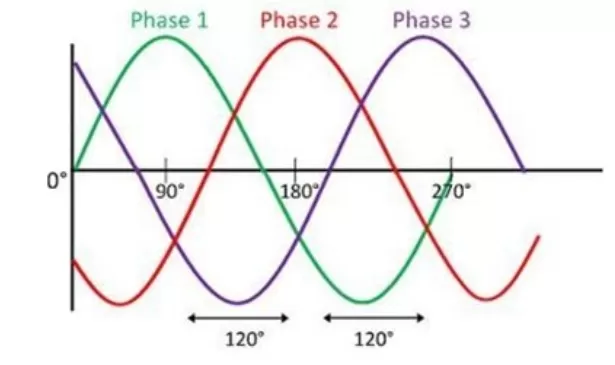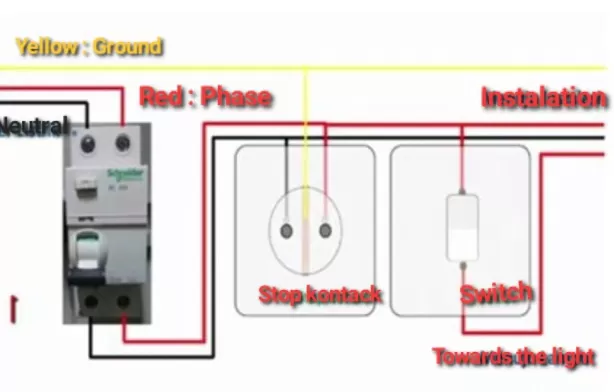Multymeter.com–Electrical Engineering: Hello everyone, in this article we will discuss the differences between 2 phase and 3 phase electric current. Electric current is the flow of electric charges that produce electrical energy. Electric current can be divided into several types based on the number of conductors or cables used to carry the current. The two types of electric current that are often encountered are 2-phase and 3-phase electric currents. What are the differences and advantages of each type of electric current? Let’s look at the following explanation.

What is 2 Phase Electric Current?

2 phase electric current is an electric current that uses two conductors or cables to carry alternating current. A 2-phase electric current has a phase angle of 90 degrees, meaning that the two conductors carry currents that are 90 degrees different from each other. 2-phase current was used in the late 19th century to drive large motors, but was soon replaced by the more efficient 3-phase current. Currently, 2 phase electric current is rarely found and only exists in old installations.
What is 3 Phase Electric Current?
2 phase electric current is an electric current that uses two conductors or cables to carry alternating current. A 2-phase electric current has a phase angle of 90 degrees, meaning that the two conductors carry currents that are 90 degrees different from each other. 2-phase current was used in the late 19th century to drive large motors, but was soon replaced by the more efficient 3-phase current. Currently, 2 phase electric current is rarely found and only exists in old installations.
What is 3 Phase Electric Current?
3 phase electric current is an electric current that uses three conductors or cables to carry alternating current. A 3-phase electric current has a phase angle of 120 electrical degrees, meaning that the three conductors carry equal and balanced currents that differ in phase by 120 degrees from one another. 3 phase electric current was invented by the Russian engineer Mikhail Dolivo-Dobrovolsky at the end of the 19th century. 3-phase electric current can transmit, generate and distribute electrical energy more efficiently and cost-effectively than 1-phase or 2-phase electric current. 3 phase electric current is widely used in industrial and commercial applications, especially to drive motors that require smooth and consistent torque.
What is the Difference between 2 Phase and 3 Phase Electric Current?
Here are some differences between 2 phase and 3 phase electric current:
| 2 Phase Electric Current | 3 Phase Electric Current |
|---|---|
| Using two conductors or cables | Using three conductors or cables |
| Has a phase angle of 90 electrical degrees | Has a phase angle of 120 electrical degrees |
| Discovered by a group of experts (Charles Proteus Steinmetz and Elihu Thomson) | Discovered by Mikhail Dolivo-Dobrovolsky |
| Discovered by a group of experts (Charles Proteus Steinmetz and Elihu Thomson) | More efficient and cheaper for the distribution of electrical energy |
| Rarely used and only in old installations | Widely used in industrial and commercial applications |
| Resulting in less smooth and consistent torque for the motor | Delivers smoother, more consistent torque for the motor |
Conclusion
2 phase and 3 phase electric current are two types of electric current which differ in the number of conductors, phase angle, finder, efficiency, cost, and application. A 2-phase electric current uses two conductors with a phase angle of 90 degrees, while a 3-phase electric current uses three conductors with a phase angle of 120 degrees. 3 phase electric current is more efficient, cost effective, and widely used than 2 phase electric current. 3 phase electric current is also better for driving motors that require smooth and consistent torque. Thus the explanation of the difference between 2 phase and 3 phase electric current. Hopefully this article is useful and adds to your insight. See you again in another interesting article.***



